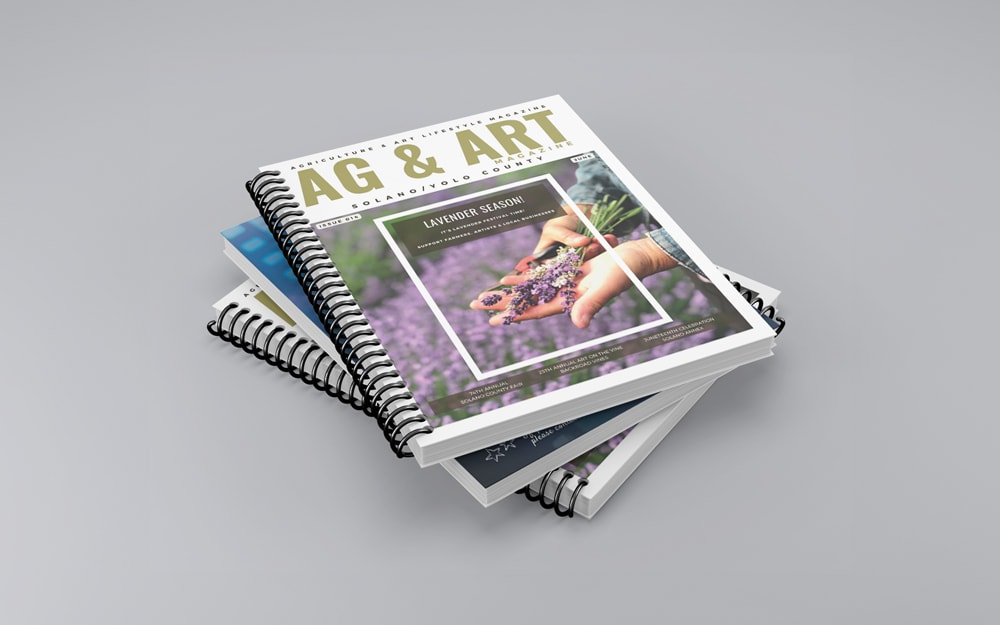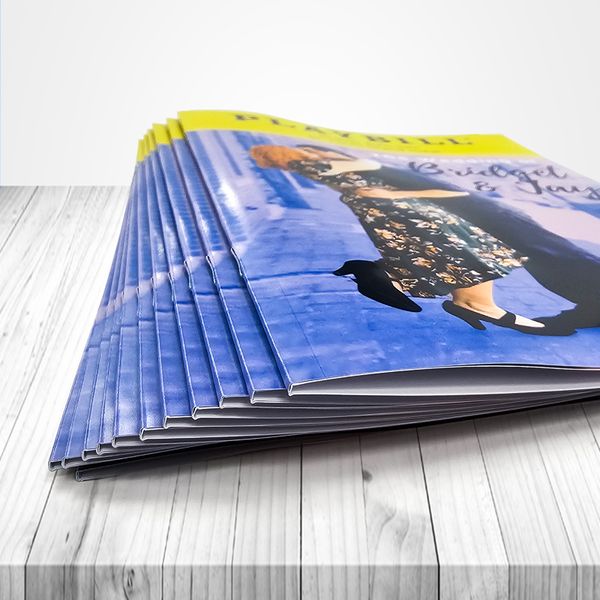The Important Overview to Comprehending Booklet Printing Options and Techniques
The process of pamphlet printing involves numerous factors to consider that can significantly affect the end product. From choosing the appropriate style and size to understanding the subtleties of binding techniques, each selection plays an essential duty. In addition, variables such as paper supply and printing methods additional influence the performance of the booklet. As one browses these alternatives, it ends up being necessary to grasp exactly how they adjoin and what that implies for the total end result.
Recognizing Brochure Sizes and layouts
When considering booklet printing, recognizing the various layouts and sizes readily available is essential for attaining the desired discussion. Brochures can be created in numerous styles, consisting of saddle-stitched, spiral-bound, and perfect-bound, each offering distinct advantages. Common dimensions vary from conventional letter (8.5 x 11 inches) to smaller sized options like A5 (5.8 x 8.3 inches), permitting flexibility based on content and target audience.Selecting the appropriate size can influence both the layout and reader involvement. Bigger sizes might match visually driven web content, while smaller sized layouts might be more straightforward and portable. Furthermore, the variety of web pages impacts the selection of binding approach, as thicker pamphlets might require sturdier bindings. Inevitably, recognizing these facets permits a more customized approach, making sure that the end product aligns with the designated message and aesthetic, boosting the general efficiency of the communication.
Choosing the Right Paper Supply

Binding Approaches: Factors To Consider and options
When it concerns binding approaches for brochures, several options are readily available, each with distinctive advantages. Saddle stitch binding offers an economical solution for thinner brochures, while perfect binding techniques provide a more sleek try to find thicker magazines. Wire-O binding attracts attention for its sturdiness and simplicity of use, making it excellent for documents that need adaptability.
Saddle Stitch Binding
Saddle stitch binding provides a practical and affordable option for setting up booklets, making it a popular selection among services and authors. This binding method includes folding sheets of paper in half and stapling them along the fold line, producing a organized and cool appearance. Commonly suitable for brochures with a lower page matter, saddle sewing is suitable for publications, brochures, and instructional products. The simpleness of this method permits fast production and is often preferred for brief runs or promotional things. It is vital to note that saddle stitch binding might not be suitable for thicker brochures, as the spine may not hold up under boosted weight. On the whole, it remains a trustworthy alternative for numerous printing projects.
Perfect Binding Techniques
Perfect binding is a widely made use of strategy that provides a polished and specialist surface to pamphlets and publications. This technique includes gluing the pages together at the spinal column utilizing a strong adhesive, enabling for a clean side and the capacity to hold a larger number of pages compared to saddle sewing. Perfect binding is specifically appropriate for thicker pamphlets, such as brochures and yearly records, where a sturdy, flat spinal column is desired. Furthermore, it provides the choice for a printed cover that can be made to enhance visual charm. Factors to consider such as page matter, paper weight, and the intended usage of the booklet must be taken right into account, as they can impact longevity and overall top quality.
Wire-O Binding Alternatives
Wire-O binding, known for its sturdiness and adaptability, offers an excellent choice for brochures that call for easy page transforming and a specialist appearance. This binding method uses a collection of steel loopholes that hold pages securely, permitting them to lie level when open. It is especially ideal for presentations, handbooks, and brochures as a result of its durable nature. Wire-O binding is readily available in different shades and diameters, fitting various web page counts and densities. Additionally, it allows the inclusion of tabs and covers, boosting the booklet's general visual. Factors to consider for Wire-O binding consist of the selection of cord color, the dimension of the loops, and the extent of customization preferred, every one of which can profoundly influence the end product's look and capability.
Digital vs. Offset Printing: Which Is Best for You?
When choosing a printing technique for brochures, understanding the distinctions in index between digital and balance out printing is crucial. Digital printing makes use of modern innovation to create premium prints promptly and economically, making it excellent for short runs or tasks requiring quick turn-around times. It enables personalization, giving the capacity to publish on-demand with minimal waste.In comparison, offset printing is a traditional technique that masters generating huge amounts with constant high quality. It entails moving ink from a plate to a rubber covering, then to the paper, which leads to vivid colors and specific details. Nonetheless, counter printing usually calls for longer arrangement times and is much more cost-efficient for bigger volumes.Ultimately, the option between electronic and balance out printing depends on project needs, budget, and preferred amount. For little, time-sensitive jobs, digital may be the most effective choice, while balanced out may be more effective for bigger, top quality manufacturings.

Designing Your Booklet: Tips and Best Practices
When making a brochure, mindful focus to design, font style option, and color usage can significantly boost its effectiveness. A well-structured layout overviews the visitor's eye, while appropriate font styles guarantee readability and convey the preferred tone. Additionally, reliable usage of color can stimulate feelings and highlight crucial information, making the overall layout more impactful.
Picking the Right Design
Exactly how can one effectively pick the right format for a booklet? First, it is important to examine the booklet's purpose and target audience. A clean, arranged design boosts readability and involvement. Utilizing a grid system can assist in aligning elements constantly, developing a professional look. Additionally, incorporating visual power structure via varying sizes and placements of images and message can assist the visitor's eye and highlight crucial details. It is additionally essential to leave adequate white space, which stops congestion and permits far better focus. Evaluating different layouts via mock-ups can give understanding right into how the design does in real-world circumstances, guaranteeing that the final product satisfies both practical and aesthetic needs. Useful Choosing Appropriate Fonts
A well-chosen font can substantially boost the total design of a brochure, enhancing the layout and enhancing the material's message. The choice of fonts need to consider readability, particularly for body message, as it guarantees the information is accessible to all viewers. Sans-serif typefaces are typically favored for digital formats, while serif typefaces can lend a typical feel in published materials. It's recommended to limit font selections to two or three to keep visual coherence. Furthermore, font dimension plays an essential duty; headings should be not frustrating however unique, while body message must be comfortable for reading. When choosing fonts, placement with the booklet's motif and target audience is vital for effective interaction and aesthetic charm.
Efficient Use Shade
Shade functions as a powerful device in pamphlet style, leading and shaping assumptions visitor emotions. It can stimulate feelings of peace, count on, or enjoyment, relying on the shades picked. Designers ought to consider shade concept principles, making certain that the chosen palette lines up with the booklet's message and target audience. Utilizing cozy colors like red and orange can produce seriousness, while cooler tones like blue and green foster tranquility.Additionally, comparison plays an important function; complementary colors can improve readability and aesthetic allure. Uniformity in shade use across web pages better reinforces brand identification and cohesion. Inevitably, efficient shade implementation not just visit this web-site catches focus yet also strengthens the brochure's objective, making it an important facet of successful layout.
Finishing Touches: Coatings and Special Effects
While many consider the content and format of a booklet the most essential elements, the ending up touches, such as coverings and special results, play an essential duty in enhancing its general charm. Coatings can offer defense and longevity, ensuring that the pamphlet stands up to deterioration. Matte surfaces provide an innovative, non-reflective surface area, while shiny coverings can make colors show up even more vivid and captivating. Special results, like embossing or foil stamping, include a responsive dimension that can create an unforgettable perception. These techniques can highlight details locations, attracting attention to vital information or creating aesthetic rate of interest. In addition, UV coating can offer a high-shine finish that boosts the total look.Together, these finishing touches not only boost the booklet's aesthetic yet also communicate professionalism and reliability and attention to information, inevitably leaving a long lasting impact on the reader.
Cost Factors To Consider for Pamphlet Printing
Recognizing the various expense factors to consider for brochure printing is necessary for companies and companies aiming to enhance their budget plans. Secret variables affecting costs include the selection of binding, paper, and ink approaches. Higher quality products, such as superior check over here paper or specialized inks, usually raise the total cost. Furthermore, the size and page matter of the pamphlet play a substantial role; larger brochures need even more sources and time to produce.Another vital consideration is the printing method, whether digital or countered, as each has its very own pricing framework and viability for various quantities. Services need to additionally factor in design prices, which can differ based upon complexity and making use of specialist solutions. Inevitably, delivery and handling costs can include to the total, particularly for huge orders. By assessing these elements, companies can make informed choices that align with their economic abilities while attaining the wanted high quality in their published products.
Regularly Asked Concerns
What Are the Environmental Impacts of Brochure Printing?
The ecological effects of brochure printing include logging from paper production, carbon exhausts from transportation, and waste generation from thrown out materials - Booklet Printing. Lasting practices, such as using recycled paper and eco-friendly inks, can alleviate these impacts
How Can I Make Certain Color Precision in My Brochure?
To assure shade accuracy in a booklet, one ought to utilize calibrated monitors, employ professional color profiles, conduct test prints, and select top notch printing solutions that use shade matching and proofing options for best outcomes.
What Is the Regular Turn-around Time for Pamphlet Printing?
The normal turn-around time for pamphlet printing differs relying on the complexity and quantity - Booklet Printing. Usually, it ranges from a couple of days to 2 weeks, influenced by aspects such as publishing methods and ending up needs
Exist Minimum Order Quantities for Booklet Printing?

Can I Print Pamphlets in Multiple Languages?
Printing pamphlets in several languages is feasible. Several printing services supply alternatives for multilingual or multilingual formats, enabling for effective interaction. Mindful preparation warranties that create components suit various languages without compromising readability or appearances. Additionally, variables such as paper stock and printing strategies more influence the effectiveness of the pamphlet. When thinking about pamphlet printing, understanding the various layouts and dimensions available is crucial for achieving the wanted presentation. When choosing a printing technique for brochures, recognizing the distinctions in between digital and offset printing is vital. Additionally, the size and page count of the brochure play a considerable function; bigger brochures call for more sources and time to produce.Another crucial consideration is the printing strategy, whether digital or offset, as each has its very own rates framework and suitability for various quantities. The ecological influences of brochure printing consist of logging from paper manufacturing, carbon discharges from transportation, and waste generation from thrown out materials.